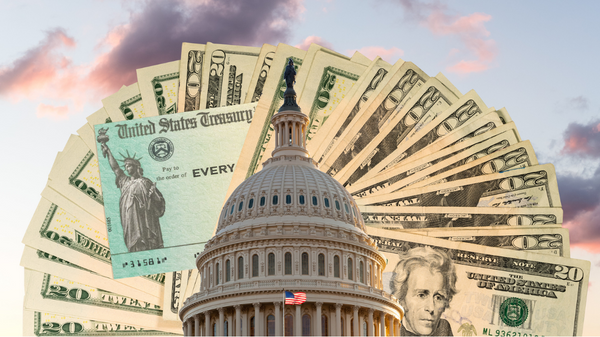The media attracts viewers and advertising dollars by scaring people with implications of impending societal collapse
It’s time again for Debt Ceiling Theater. Since 1940, Americans have typically caught this show just about every eight months. The actors and dialogue change, but the characters and the plot never do. “Party out of power” shows that it’s tough on spending by refusing to raise the debt ceiling. “Party in power” trots out the poor, the environment, the elderly, the military, or whatever else will get the voters all worked up, and cries that “party out of power” is holding the country hostage. Even the media has a cameo appearance as “concerned institution informing the public and holding politicians’ feet to the fire.”
In fact, the actors are all there to make a buck. The media attracts viewers and advertising dollars by scaring people with implications of impending societal collapse. The two parties get to rile up their bases in a sort of half-time-between-elections slugfest. But everyone knows how the show is going to end.
Once in a while, to really get the crowd on their feet, the President will offer up a showstopper in which he “shuts down” the government. But the shutdown only ever applies to non-essential government services (don’t ask why we’re spending on anything that’s non-essential, anyway). And as soon as the shutdown ends, all the money that would have been spent during the shutdown is then spent retroactively.
Spending is never shut down, it’s just deferred.
The show’s ending hasn’t changed in more than 90 performances. In the nick of time, Congress raises the debt ceiling and everything goes back to normal. To resonate with voters, the show is advertised as a story of a household grappling with its debts and doing the right thing. The true story is more of a person making and breaking a New Year’s resolution. There’s nothing binding about the debt ceiling; Congress can (and does) raise the ceiling whenever it wants with the same majority vote that’s required to approve spending.
What the public spectacle does is to give voters the impression that our politicians are making tough decisions and whipping our financial house into shape. But that’s nonsense. The federal debt stands now at more than $31 trillion. And that’s not counting retirement benefits the government has promised to federal workers and Social Security recipients, which it won’t have the money to pay. It’s unclear how much that is, but Social Security’s own estimates come in at around $50 trillion. Far from there being a hope that politicians are getting this mess under control, there’s every sign that they’ve given up even trying. The Congressional Budget Office estimates that the federal debt will increase by an average of almost $1.5 trillion per year over the next ten years. Given that the CBO has underestimated the future debt in 80 percent of its past 200-plus forecasts, the actual number is likely to be closer to $1.8 trillion per year, on average.
If interest rates remain at their pre-inflation levels, then the interest on the debt will consume 16 percent of annual federal receipts by 2033 (up from 15 percent today). But here’s the twist: if the Federal Reserve continues to help finance the government’s ongoing trillion-dollar deficits as it has since 2020, we’re going to see ongoing inflation as the growth in the money supply continues to outpace the growth in the economy. Eventually, that inflation gets priced into bonds, and so interest rates rise. But, to hold inflation under control, the Fed needs to slow the growth in the money supply, but that raises interest rates. Either way, low interest rates are a thing of the past. And being $31 trillion dollars in hock, just a one-percentage-point increase in interest rates would eventually increase the government’s annual interest expense from 15 percent of its revenues today to 24 percent by the end of the decade.
So when the Profligate Democrats are stuck in their tracks by Responsible Republicans, do your best to forget that those roles were reversed just a couple of years ago. Go ahead and convince yourself that This Time It Will Be Different, all evidence to the contrary. And by all means, fool yourself into believing that we deserve better. But we don’t. We deserve exactly the government we have insisted upon for all these years. We also deserve the heavy price that will come for our own irresponsibility in repeatedly re-electing this troupe. No partisan theater will ever sugarcoat that.
Originally published by the Cato Institute. Republished with permission under a Creative Commons Attribution-NonCommercial-ShareAlike 4.0 International License.
For more from Budget & Tax News.
For more public policy from The Heartland Institute.











